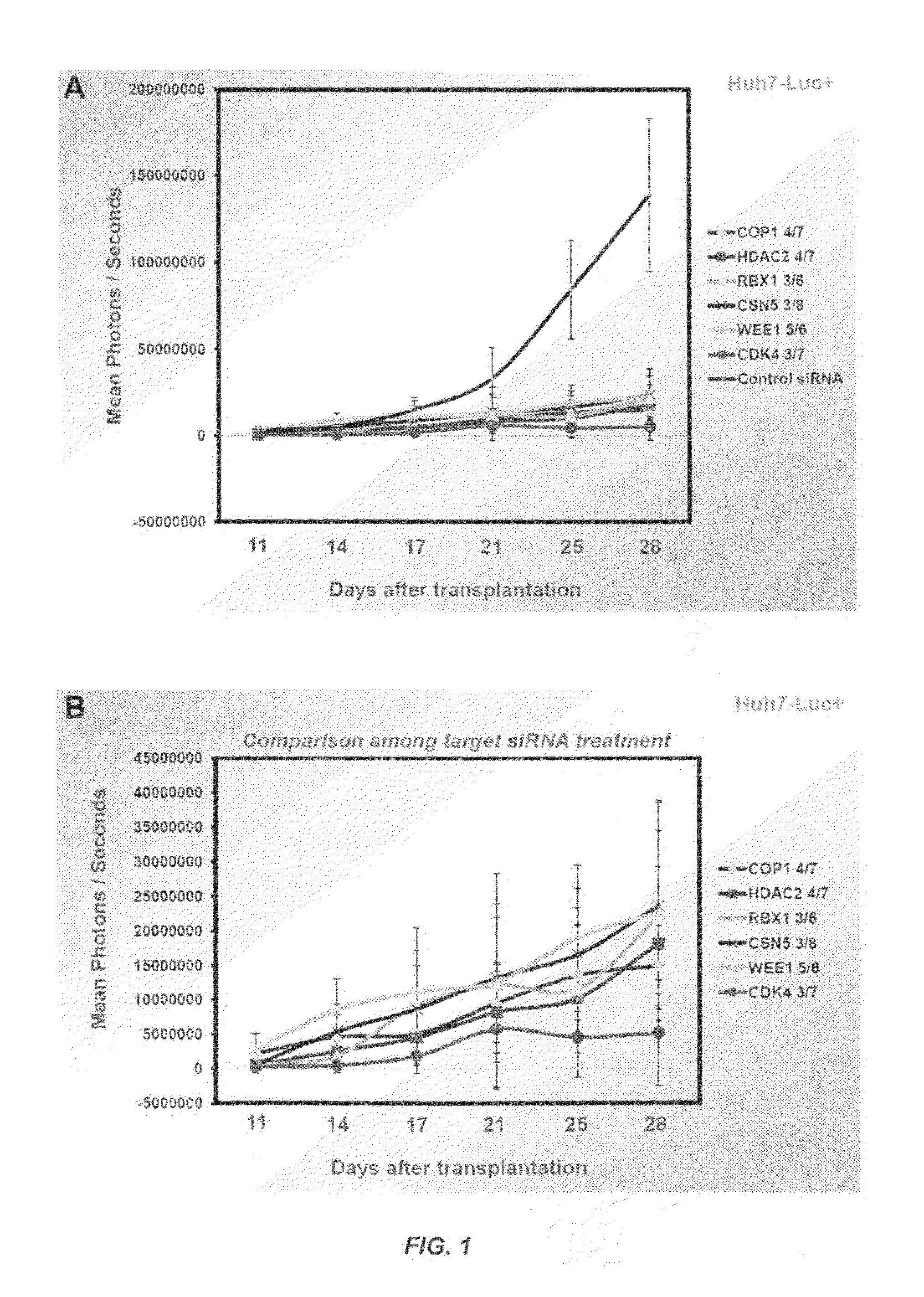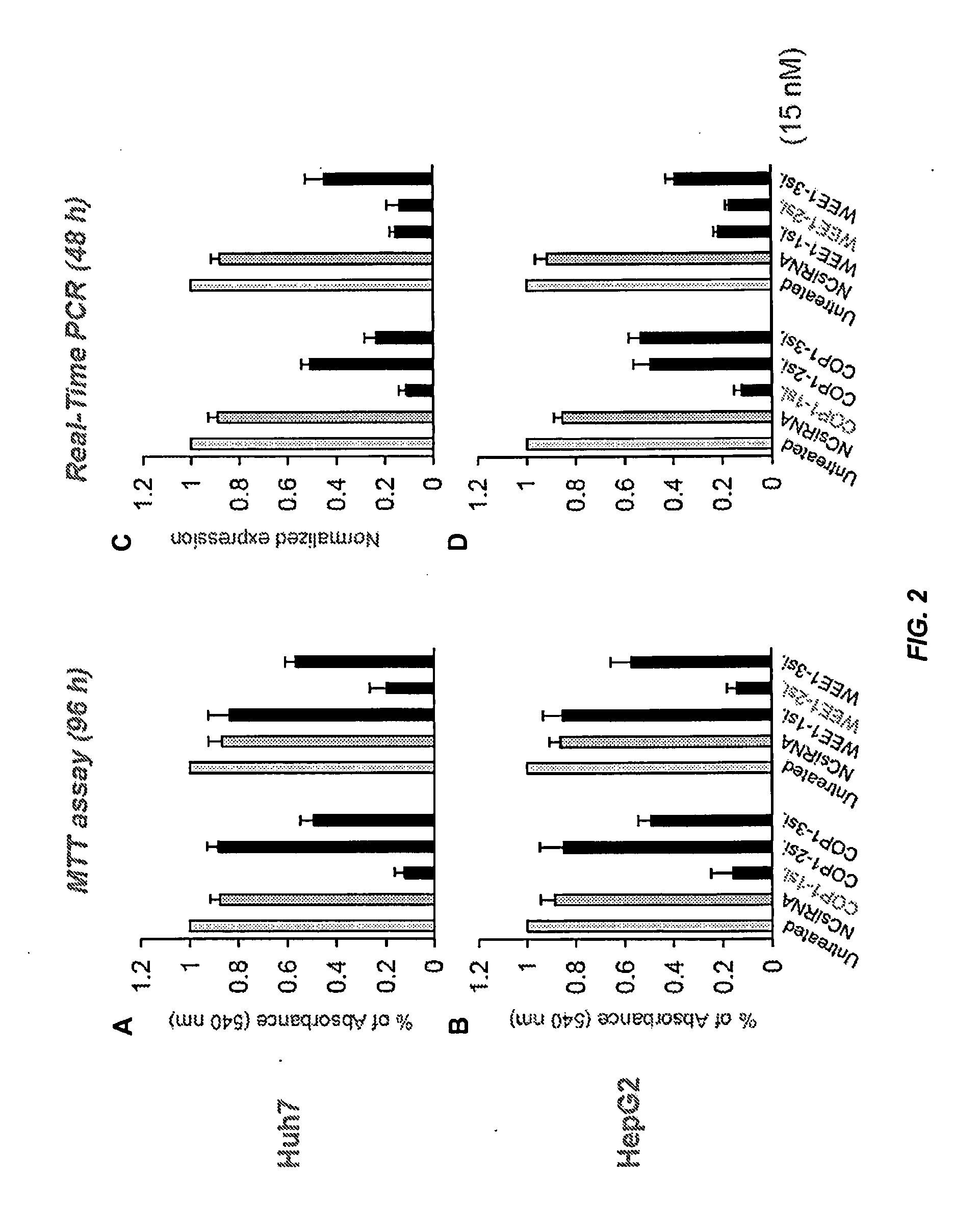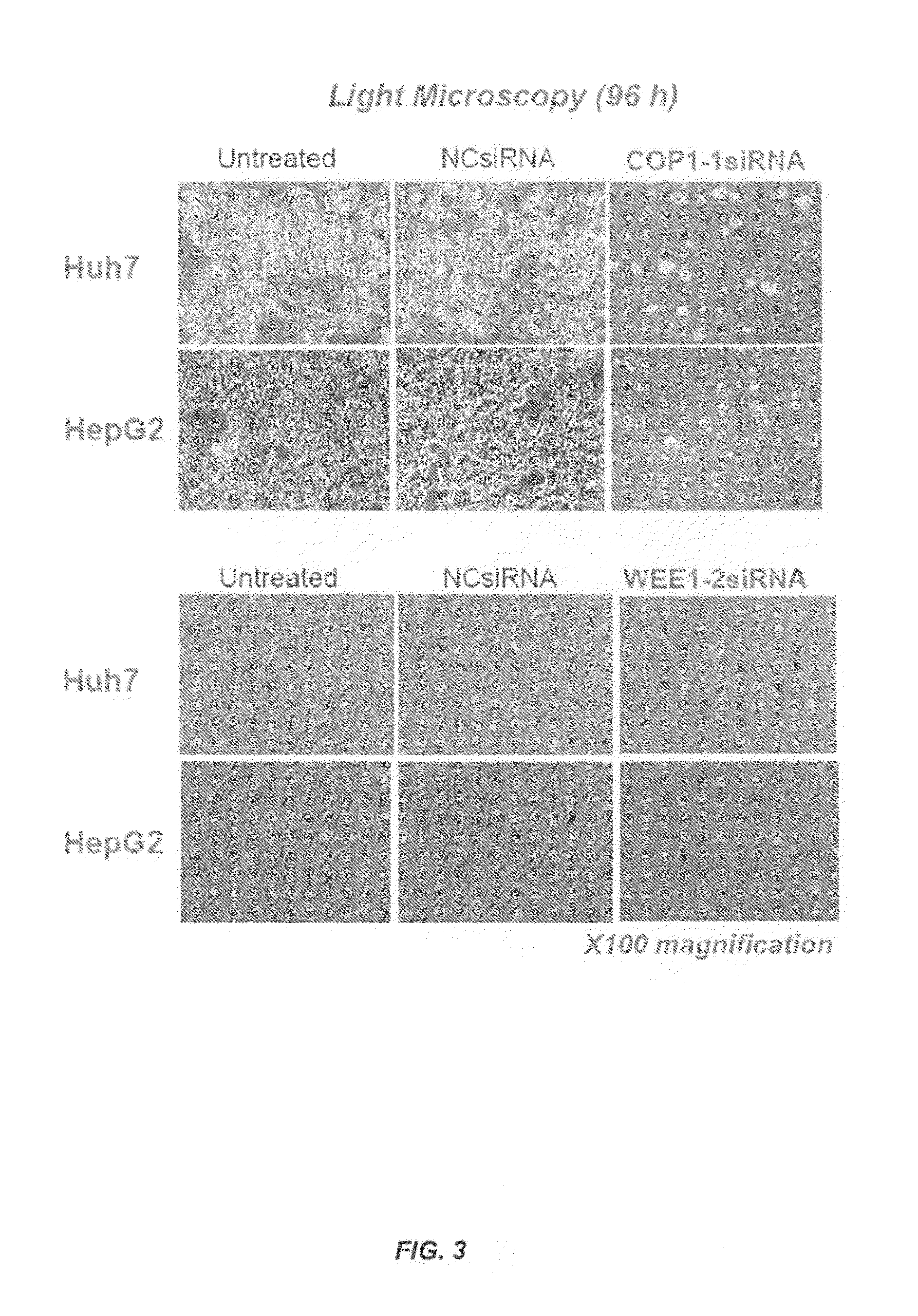Compositions and methods for silencing genes expressed in cancer
a technology of silencing and genes, applied in the field of compositions and methods for silencing genes expressed in cancer, can solve problems such as immune responses, potential reversion, and limitations
- Summary
- Abstract
- Description
- Claims
- Application Information
AI Technical Summary
Benefits of technology
Problems solved by technology
Method used
Image
Examples
example 1
Materials and Methods
[0642]siRNA:
[0643]All siRNA molecules used in these studies were chemically synthesized and annealed using standard procedures. The target siRNA sequences used in these studies are shown in Tables 11-30. In particular embodiments, the interfering RNA (e.g., siRNA) of the present invention comprises: a sense strand comprising nucleotides 1-19 of any one of the sense strand sequences set forth in Tables 11-30; and an antisense strand comprising nucleotides 1-19 of any one of the antisense strand sequences set forth in Tables 11-30. In other particular embodiments, the interfering RNA (e.g., siRNA) of the present invention comprises: a sense strand selected from any one of the sense strand sequences set forth in Tables 11-30; and an antisense strand selected from any one of the antisense strand sequences set forth in Tables 11-30. The βgal478 siRNA sequences are as follows:
[0644]Sense strand: 5′-mGAAGmGCCAGACmGCmGAAUUAdTdT-3′ (SEQ ID NO: 236);
[0645]Antisense strand...
example 2
Therapeutic Targeting of COP1 or WEE1 with siRNA for the Treatment of Cancer
[0670]This example illustrates that (1) siRNA-mediated knockdown of COP1 or WEE1 expression inhibited the proliferation of cells from a variety of human HCC cell lines; (2) treatment with siRNA targeting COP1 or WEE1 increased apoptosis of human HCC cells by restoring the protein levels of the p53 tumor suppressor; (3) WEE1 silencing decreased the size of side population-containing cancer stem cells (CSC), indicating that targeting the WEE1 gene is effective in anti-CSC therapy; and (4) systemic delivery of SNALP containing chemically modified COP1 or WEE1 siRNA effectively suppressed neoplastic growth in a mouse model of metastatic human liver cancer.
COP1 and WEE1 siRNA Sequences Used in this Study
[0671]Table 11 provides a list of exemplary siRNA sequences targeting human COP1 gene expression.
TABLE 11siRNA sequences that target human COP1 geneexpression.Target or SenseAntisenseStrand SequenceStrand Sequence...
example 3
Therapeutic Targeting of HDAC2 with siRNA for the Treatment of Cancer
[0696]This example illustrates that (1) siRNA-mediated knockdown of HDAC2 expression inhibited the proliferation of cells from human HCC cell lines; (2) treatment with siRNA targeting HDAC2 increased apoptosis of human HCC cells by restoring the protein levels of the p53 tumor suppressor; and (3) systemic delivery of SNALP containing chemically modified HDAC2 siRNA effectively suppressed neoplastic growth in a mouse model of metastatic human liver cancer.
HDAC2 siRNA Sequences Used in this Study
[0697]Table 15 provides a list of exemplary siRNA sequences targeting human HDAC2 gene expression.
TABLE 15siRNA sequences that target human HDAC2 gene expression.siRNAHDAC2-1HDAC2-2HDAC2-3
[0698]Table 16 provides a list of chemically modified HDAC2-1 siRNA molecules containing 2′OMe nucleotides at selective positions within the double-stranded region.
TABLE 162′OMe-modified siRNA sequences that target humanHDAC2 gene expression...
PUM
| Property | Measurement | Unit |
|---|---|---|
| Fraction | aaaaa | aaaaa |
| Fraction | aaaaa | aaaaa |
| Volume | aaaaa | aaaaa |
Abstract
Description
Claims
Application Information
 Login to View More
Login to View More - R&D
- Intellectual Property
- Life Sciences
- Materials
- Tech Scout
- Unparalleled Data Quality
- Higher Quality Content
- 60% Fewer Hallucinations
Browse by: Latest US Patents, China's latest patents, Technical Efficacy Thesaurus, Application Domain, Technology Topic, Popular Technical Reports.
© 2025 PatSnap. All rights reserved.Legal|Privacy policy|Modern Slavery Act Transparency Statement|Sitemap|About US| Contact US: help@patsnap.com



